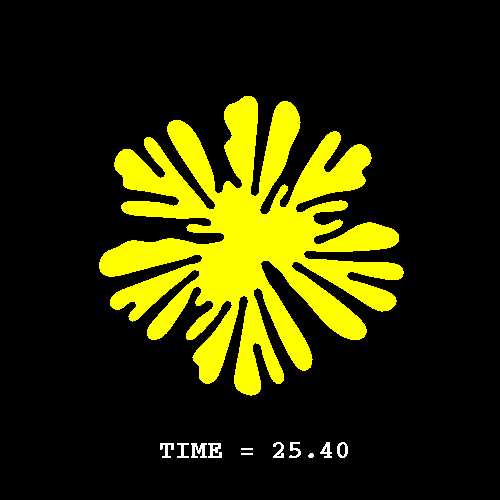
II. The Saffman-Taylor Instability.
Removing the Stiffness from Interfacial Flows with Surface
Tension
Journal of Computational Physics , Vol. 114, p. 312,
1994.
T.Y. Hou (Caltech), J.S. Lowengrub (Minnesota), and M.J. Shelley
(Courant)
download gzipped postscript
or pdf
III. Bubble Instability in a Time-Dependent Gap. Krzysztof
Wlodarski and Michael Shelley
This simulation shows the Saffman-Taylor instability of a drop of fluid,
resulting from the lifting of the plate in a Hele-Shaw cell. Again, this simulation
is based upon a boundary integral formulation of the equations of motion
and employs the Small-Scale Decomposition to remove high-order time-stepping
constraints, and the GMRES iterative technique for the efficient solution
of integral equations.
Hele-Shaw Flow and Pattern Formation in a Time-Dependent
Gap
by M.J. Shelley, F.-R. Tian (Ohio State), and K. Wlodarski,
in Nonlinearity, Vol. 10, p. 1471, 1997.
Download gzipped postscript
or PDF